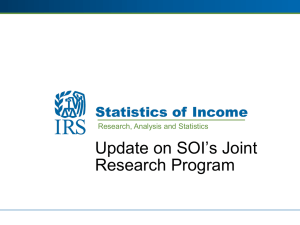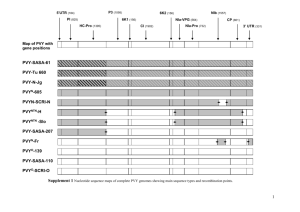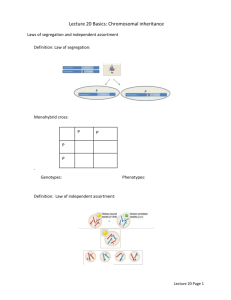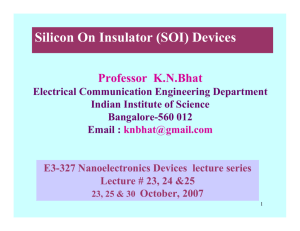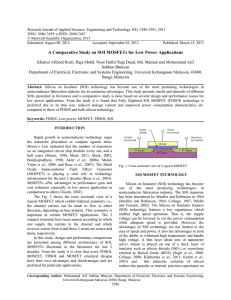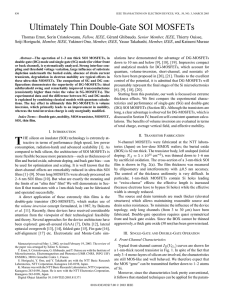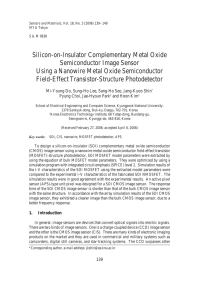performance estimation of soi mosfet single
advertisement
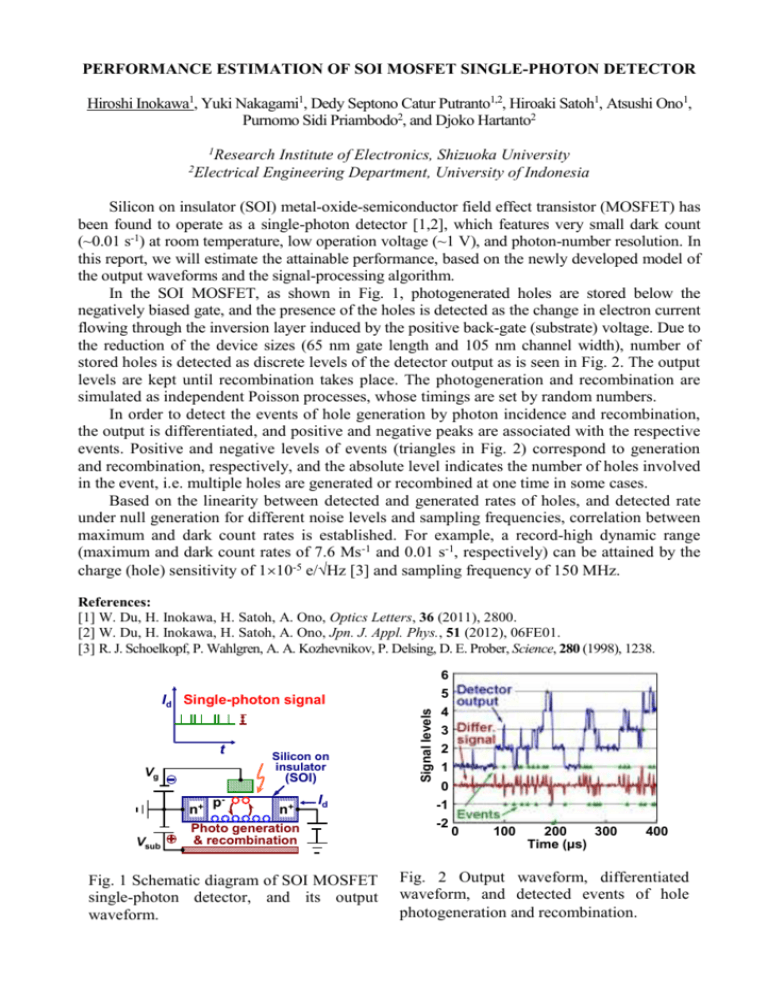
PERFORMANCE ESTIMATION OF SOI MOSFET SINGLE-PHOTON DETECTOR Hiroshi Inokawa1, Yuki Nakagami1, Dedy Septono Catur Putranto1,2, Hiroaki Satoh1, Atsushi Ono1, Purnomo Sidi Priambodo2, and Djoko Hartanto2 1Research 2Electrical Institute of Electronics, Shizuoka University Engineering Department, University of Indonesia Silicon on insulator (SOI) metal-oxide-semiconductor field effect transistor (MOSFET) has been found to operate as a single-photon detector [1,2], which features very small dark count (~0.01 s-1) at room temperature, low operation voltage (~1 V), and photon-number resolution. In this report, we will estimate the attainable performance, based on the newly developed model of the output waveforms and the signal-processing algorithm. In the SOI MOSFET, as shown in Fig. 1, photogenerated holes are stored below the negatively biased gate, and the presence of the holes is detected as the change in electron current flowing through the inversion layer induced by the positive back-gate (substrate) voltage. Due to the reduction of the device sizes (65 nm gate length and 105 nm channel width), number of stored holes is detected as discrete levels of the detector output as is seen in Fig. 2. The output levels are kept until recombination takes place. The photogeneration and recombination are simulated as independent Poisson processes, whose timings are set by random numbers. In order to detect the events of hole generation by photon incidence and recombination, the output is differentiated, and positive and negative peaks are associated with the respective events. Positive and negative levels of events (triangles in Fig. 2) correspond to generation and recombination, respectively, and the absolute level indicates the number of holes involved in the event, i.e. multiple holes are generated or recombined at one time in some cases. Based on the linearity between detected and generated rates of holes, and detected rate under null generation for different noise levels and sampling frequencies, correlation between maximum and dark count rates is established. For example, a record-high dynamic range (maximum and dark count rates of 7.6 Ms-1 and 0.01 s-1, respectively) can be attained by the charge (hole) sensitivity of 110-5 e/Hz [3] and sampling frequency of 150 MHz. References: [1] W. Du, H. Inokawa, H. Satoh, A. Ono, Optics Letters, 36 (2011), 2800. [2] W. Du, H. Inokawa, H. Satoh, A. Ono, Jpn. J. Appl. Phys., 51 (2012), 06FE01. [3] R. J. Schoelkopf, P. Wahlgren, A. A. Kozhevnikov, P. Delsing, D. E. Prober, Science, 280 (1998), 1238. t Vg (SOI) n+ Vsub + Silicon on insulator p- n+ Id Photo generation & recombination Fig. 1 Schematic diagram of SOI MOSFET single-photon detector, and its output waveform. Signal levels Id Single-photon signal 6 5 4 3 2 1 0 -1 -2 0 100 200 300 Time (µs) 400 Fig. 2 Output waveform, differentiated waveform, and detected events of hole photogeneration and recombination.
